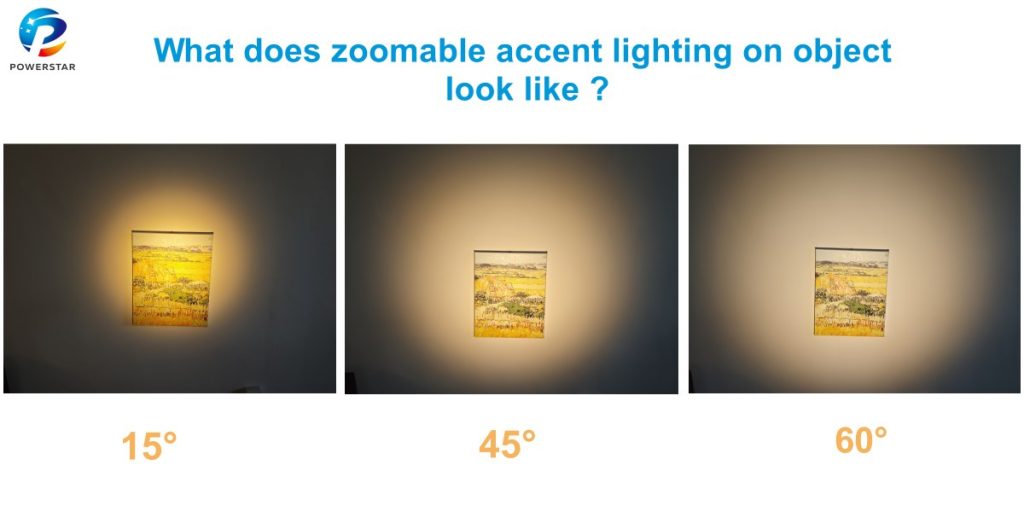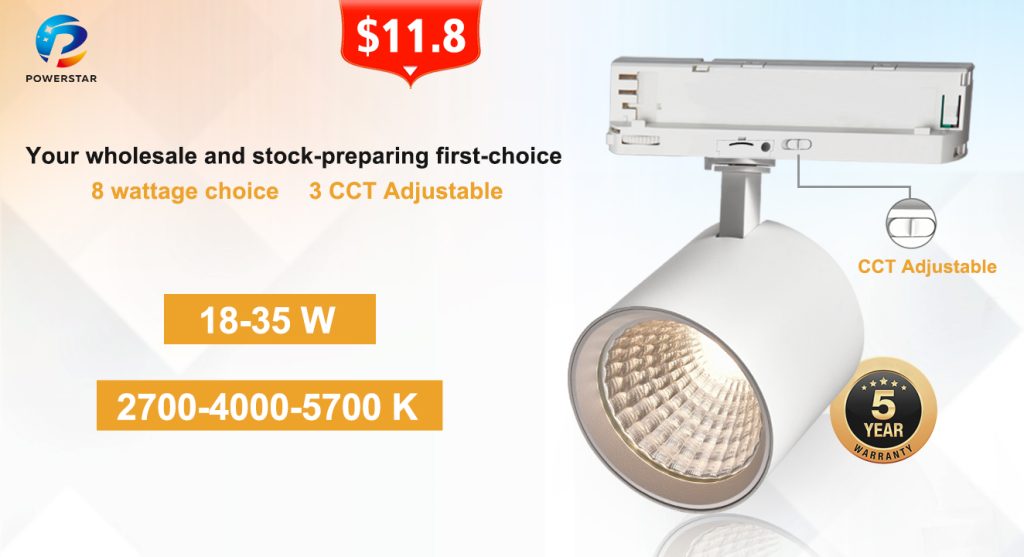Focus Track Light vs. Traditional Track Light: Pros and Cons and Applicable Scenarios
By Powerstar

In modern lighting design, track lights have become a popular choice for commercial and home spaces due to their flexibility and functionality.
However, with technological advances, traditional track lights with fixed beam angles are gradually being replaced by adjustable focus track lights.
This article will comprehensively compare the differences between the two from the technical principles, performance advantages and disadvantages to actual application scenarios to help users make a more informed choice.
Focusing track light
Optical system: By rotating or pushing and pulling the focusing structure, the distance between the lens and the light source is changed, and the beam angle is adjusted dynamically (for example, from 15° narrow light to 60° wide angle).
Light source compatibility: High color rendering LED modules are mostly used, supporting color temperature adjustment (such as 2700K-6000K).

Intelligent upgrade: Some models support wireless remote control, mobile phone App or voice control to achieve precise dimming and focusing.
Traditional track light
Fixed beam angle: The fixed angle (such as 24°, 36°) is set at the factory and cannot be adjusted later.
Simple structure: Usually an integrated design, relying on the replacement of lamps or accessories to change the lighting effect.

Cost advantage: No complex focusing components, low production and maintenance costs.
Comparison of advantages and disadvantages: Which one is more suitable for your needs?
Advantages of focus track lights:
Strong flexibility
No need to change lamps, a single lamp can cover a variety of lighting needs (such as accent lighting, wall washing, floodlighting).
Widely applicable scenarios, especially suitable for spaces that need to frequently adjust the layout (such as exhibition halls, retail stores).
Energy saving and precise light control
The light effect is more concentrated in the narrow beam angle mode, reducing ineffective light waste and energy consumption.
High color rendering index (CRI ≥ 90) can truly restore the color of objects and enhance the visual experience.
Intelligent trend
Combined with sensors or smart home systems, automatic focusing is achieved (such as adjusting the lighting area according to the movement trajectory of people).
Disadvantages of focus track lights
High price
Focusing structure and high-quality optical components result in a cost that is 30%-50% higher than traditional lamps.
Maintenance complexity
The focusing mechanism may become stuck due to frequent use and needs to be cleaned and lubricated regularly.
Advantages of traditional track lights
Affordable
Low unit price, suitable for scenes with limited budgets or no need for complex lighting design.
High stability
Simple structure, low failure rate, and almost zero maintenance cost.
Disadvantages of traditional track lights
Poor flexibility
If you need to change the beam angle or lighting direction, you must replace the lamp or accessories.
Single light effect
Fixed angles may lead to light waste (such as insufficient coverage of narrow light areas or uneven brightness in floodlight areas).
Applicable scenarios: How to choose?
Preferentially choose the scene of focusing track lights.
Commercial space:
Retail store: Highlight the display of goods by adjusting the beam angle to attract customers’ attention.
Art gallery/museum: Precisely control the light angle to avoid ultraviolet damage to exhibits.
Home design:
Living room and dining room: Switch between cold and warm light and beam range according to different scenes (party, movie).
Open kitchen: narrow beam focuses on the workbench, and wide-angle light covers the dining area.
Exhibition and stage
Dynamically adjust the lighting effect to match different performances or exhibition needs.
Scenarios where traditional track lights still have advantages
Basic lighting needs
Warehouses, supermarkets and other places that require uniform floodlighting.
Projects with limited budgets
Cost-sensitive scenes such as short-term activities and rental spaces.
Fixed layout space
Areas such as corridors and stairwells where lighting does not need to be adjusted frequently.
Future Trends: Will Focus Track Lights Replace Traditional Products?
With the popularization of LED technology and intelligent control systems, the cost of focus track lights is gradually decreasing.
In the high-end commercial and home fields, its “one light for multiple uses” feature has gradually become the mainstream. However, traditional track lights will still occupy a place in the basic lighting market with their extreme cost-effectiveness.
Recommended selection strategy:
Pursue flexibility and quality: Prioritize focus track lights, which are more cost-effective for long-term use.
Focus on cost and stability: Traditional track lights are a pragmatic choice.
Conclusion
Focusing track lights and traditional track lights are not “either one or the other”, but complementary. Users need to flexibly choose according to actual needs, budget and scenarios.
In the future, with the iteration of intelligent lighting technology, “adaptive focusing” may become a new industry standard, further expanding the application boundaries of track lights.


